10 Classic Ways to Brighten a Dark Room
Hello, my friend, hello again; today we come together to talk about 10 Classic Ways to Brighten a Dark Room and hope the blog can help you.
Bringing light to a dark room will immediately make it more appealing. If making structural changes like adding windows, doors or skylights just isn’t in the cards, you can use paint, rugs, lighting, and accessories to transform a cave into a captivating place where everyone will want to gather.
Lighten & Brighten
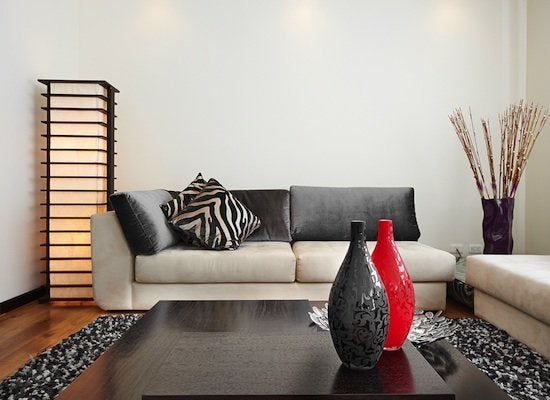
A dark room can feel drab and uninviting. Use a few simple techniques, and paint, fixtures, and accessories, to brighten a dim space and bring it fresh charm.
Paint the Ceiling White
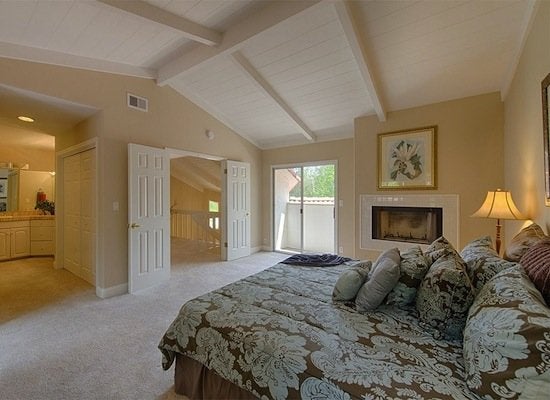
Zillow Digs home in Cupertino, CA
A dark ceiling can loom above a room and make it feel small. To immediately brighten the space, give the ceiling a fresh coat of white paint. Heavy wooden beams can darken a room. Paint them as well, and they’ll all but disappear.
Limit Dark Colors to Accents
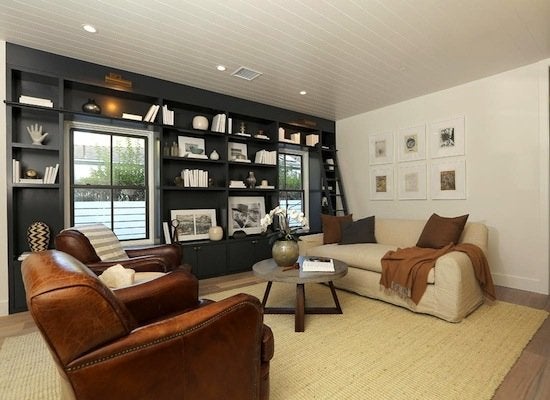
Zillow Digs home in Studio City, CA
Color is a wonderful design tool. But too much of a dark hue can make a room feel closed in. If your room suffers from darkness, limit saturated colors to a single wall, or accents, and paint the other walls something light and bright.
Related: The Classy Color You’ve Been Too Scared to Try
Lighten Your Window Treatments
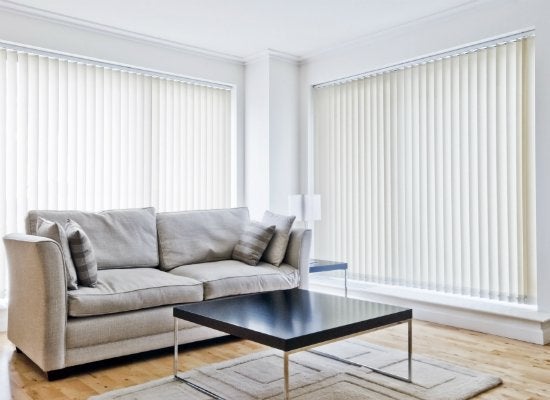
Make the most of the natural light that you have. Avoid heavy draperies and window treatments that block natural light. Instead, choose minimal options, like blinds and roman shades that don’t take up space on your wall. An opaque treatment will give you privacy while still letting light into the room.
Minimize Furniture
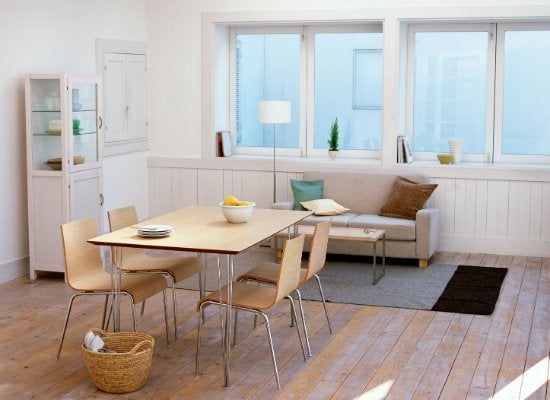
Heavy, cumbersome furniture overwhelms a room, making it feel dark. Swap overstuffed and clunky pieces for those with smooth, sleek lines and light legs. Solid, lighter colors instead of bold, dark prints, also keep the room feeling light.
Lighten Dark Floors
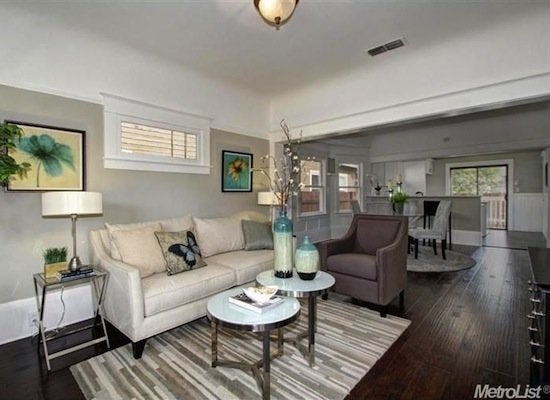
Zillow Digs home in Sacramento, CA
Lighten up what’s underfoot. If you can’t refinish or replace a dark floor, cover it with a light-toned area rug, and you’ll bring instant brightness to the area.
Diffuse Lighting
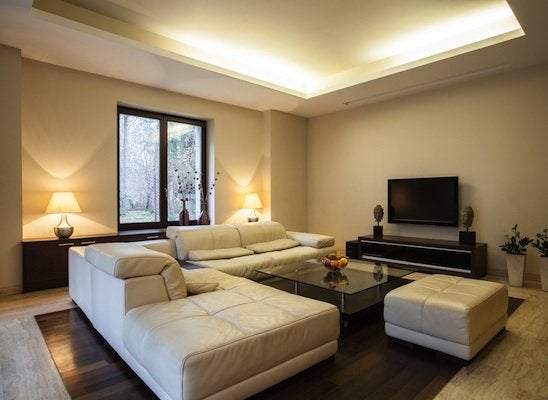
Use walls and ceilings as reflectors to help maximize your light. Place lamps and light fixtures so that they shine onto other surfaces, and up the ambient light in the room.
Use Brighter Lightbulbs
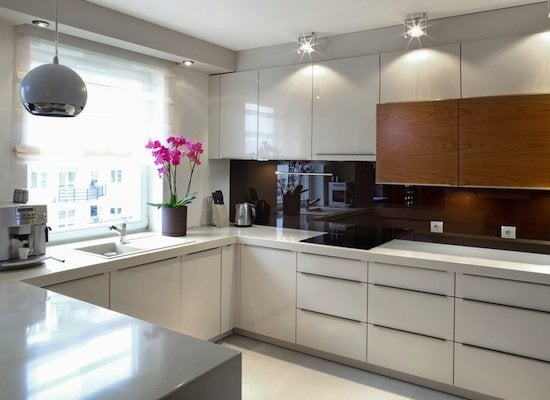
Lumens, not watts, is the unit of measure that counts. Swap your light bulbs for some with higher lumens, and you’ll up the intensity of light in the room. CFLs and LEDs give you a higher light output for the amount of energy they consume, so you can be more energy efficient at the same time.
Add a Mirror
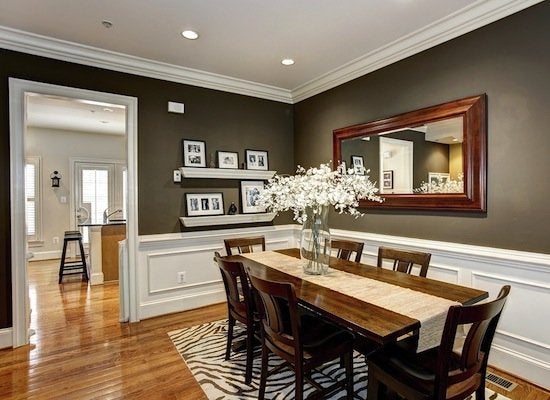
Zillow Digs home in Sacramento, CA
Strategically place a mirror or two in a dark room, and it will reflect light, making it feel brighter—and bigger. Large mirrors with slimmer frames are best because they bring in light while feeling less clunky and intrusive.
Lighten Up on Accessories and Art

Zillow Digs home in Katy, TX
Take a look at all your “stuff.” Too much junk crowds a room and makes it feel dark and small. Reduce it all. Minimize books and tchotchkes, and keep art and accessories that are bright and light with clean lines.
Swap In a Glass Door
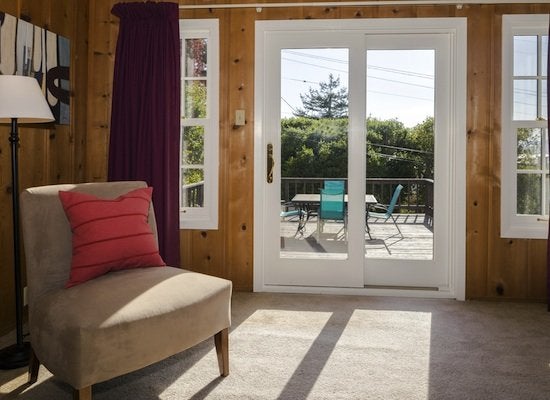
If you can make more permanent changes to your space, swap a solid door out for a glass one. If it’s an exterior door, it will increase the natural light in the room. If it’s an internal door, it will make the room feel more open and bright.
For More…
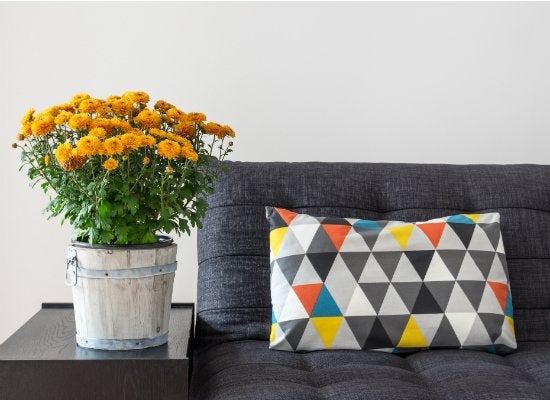
If you’re interested in more decor tips, consider:
Brighten Up Your Bath: 7 Tips From the Color Pros
9 Calming Colors for a Serene Home